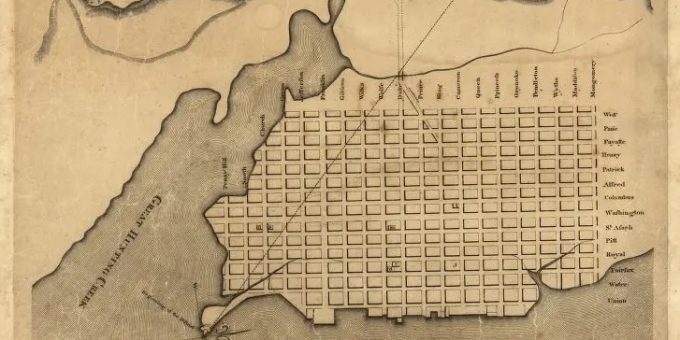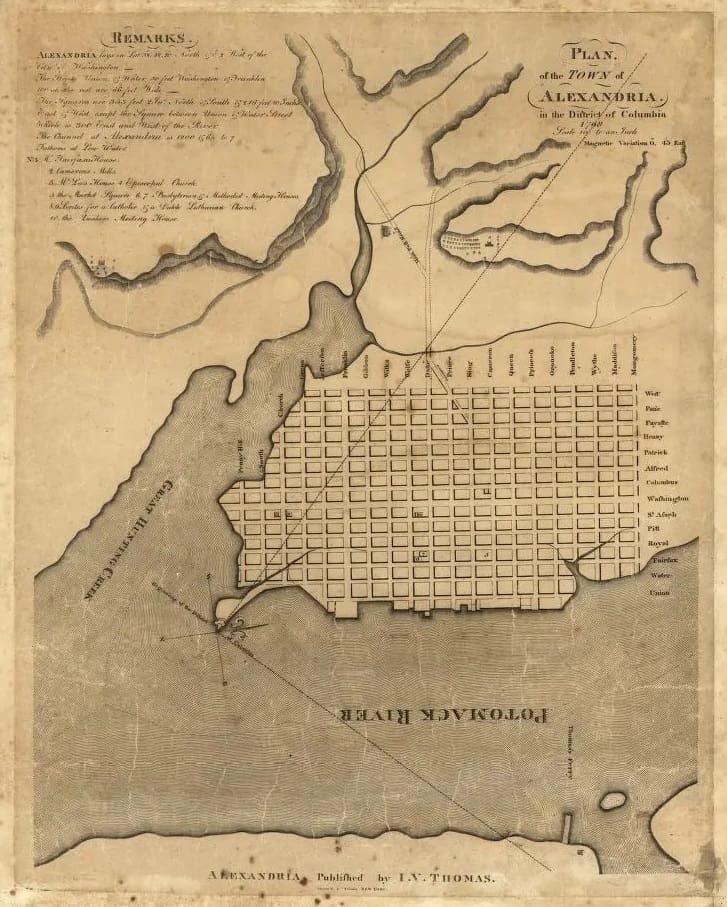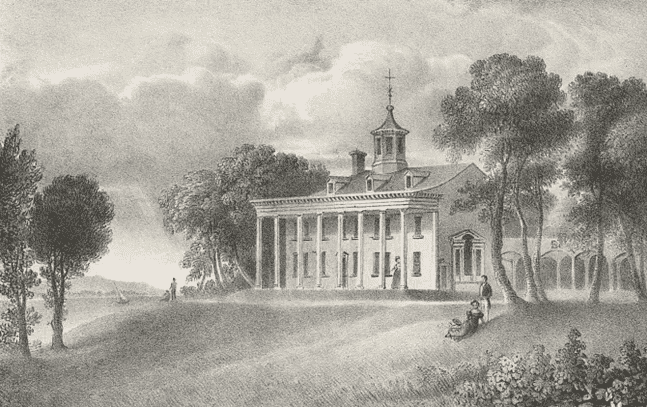

On April 11, 1781, A British fleet arrived in the Potomac River just south of Alexandria, Virginia. In the fleet were three 18-gun ships, the 16-gun sloop HMS Savage under the command of Captain Thomas Graves, two brigs and two schooners. This fleet was dispatched in March of 1781 to sail up the Potomac River, raid the plantations along the river in Maryland and Virginia and attempt to prevent Marquis de Lafayette’s American army (then in Maryland marching south) from crossing the Potomac into Virginia.
On April 11, they appeared off the coast of Alexandria. The sight of the fleet threw the town into “much confusion.” American militia formed up and marched into a fort along the river. While the exact location of this colonial fort is uncertain, it is likely that the fort was located at the tip of Jones Point, near the location of the 19th century Jones Point Lighthouse. Fortifications were constructed after the war in 1794, and it would have been the most logical location for a fort in 1781. The Fairfax County militia assembled at Alexandria and manned the fort. This militia company was led by Lt. Col. John Fitzgerald.
John Fitzgerald was an Irish Catholic immigrant who had settled in Alexandria around 1769. Before the Revolution, Fitzgerald became good friends with another Alexandria, Virginia citizen, George Washington. Fitzgerald was a member of the local patriot militia as early as 1774. In 1776, Fitzgerald was commissioned a captain in the 3rd Virginia Regiment of the Continental Line. By the end of the year, he was promoted to Lieutenant Colonel and was made an aide-de-camp to General Washington. By Washington’s side, Fitzgerald saw action at Trenton, Princeton, Brandywine, and Germantown. He spent the winter of 1777 and 1778 at Valley Forge, and in June of 1778 was wounded at the Battle of Monmouth. Fitzgerald left Continental Army service and spent the rest of the war at Alexandria but remained active in the local militia. He would command the militia when the British approached in April of 1781.
In September of 1783, General Nathanael Greene returning home after the war, stopped in Alexandria and learned of the heroism of the American militia at Jones Point and John Fitzgerald in particular. He wrote that “Colonel Fitzgerald’s gallantry in 1781 saved it from being burnt by the British. A party came up on purpose and paraded before the place, but the colonel made so good a display of the few men he could collect that the enemy were frightened and did not land, although they were five times the number of his men.”

George Washington’s Mount Vernon narrowly escaped being destroyed in April of 1781.
Library of Congress
After spending the day at Alexandria, on April 12, the British fleet sailed back downriver, ending the one time the British came close to Alexandria, Virginia. The raiding fleet sailed back down the Potomac, continuing to loot and burn plantations along the river and skirmish with local militias. Shortly after leaving Alexandria, the fleet anchored near George Washington’s home, Mount Vernon. Washington’s caretaker and cousin, Lund Washington, attempted to prevent the British from looting and burning Mount Vernon by giving them “sheep, hogs, and an abundant supply of other articles as a present to the English frigate.” The British accepted the gift and spared the plantation. Among the other things the British took were 17 enslaved people from Mount Vernon, who escaped onto the British ship.
Washington, on learning of how his home was saved was not happy about it. He had been prepared to lose his home in joining the Revolutionary struggle and was upset that his home had been spared while others were burnt. He wrote Lund that “It would have been a less painful circumstance to me, to have heard, that in consequence of your non-compliance with their request, they had burnt my House, and laid the Plantation in ruins.”
Though Washington was dismayed at his home being spared, the public can still visit Washington’s home at Mount Vernon because of the actions of Lund Washington. And an important site for the defense of Alexandria in 1781 is today managed by the George Washington Memorial Parkway at Jones Point Park. Though no vestiges of the Revolutionary War fort remain today, visitors can stand at the point and look out on the Potomac River where British ships once almost burnt the town during the Revolutionary War.
Reprinted from: https://home.nps.gov/gwmp/learn/historyculture/revolutionary-war-standoff-at-jones-point.htm
